English [🇺🇸]
Aloha everyone!
In my introductory post and this other post, I shared a little about my journey in photography and surf photography.
I started photographing in 2012 and started surfing later, in 2016. And I only delved deeper into surf photography in 2018 when I moved to California. In the last 5 years, I believe I have learned a lot about surf photography, enough to pass on some of my experience.
I don't consider myself a professional surf photographer, but it is one of my jobs contributing to my monthly income. So, I put together this post to share some tips and learnings that I've been adding over this time, and some of them will help you get more into this market and even sell more photos if that's your goal. That is because practically everyone starts photography as a hobby until it becomes their job.
1. Learn the basics of surfing
You can trust me. If you want to enter any field of photography, you must understand what it is like to be in front of the camera because you see your subject superficially when you are only behind the camera.
In the case of surf photography, learning to surf will make you understand, for example, how surfers position themselves in the water and what are the most critical moments when riding a wave.
I felt very comfortable when I started photographing surfing because I already understood the sport and wanted to see records and photos of myself from those moments.
You don't need to be an athlete or professional in surfing, but understanding the basics will significantly advance your process in this field and save you time, clicks, and money.
Getting straight to the point, important moments in surfing are the drop (the moment the surfer gets up and stands on the board), bottom turns, maneuvers, and barrels. Here are some examples of situations and photos that I consider good:
- When the drop is difficult or very vertical, especially in the case of big or hollow/tubular waves:
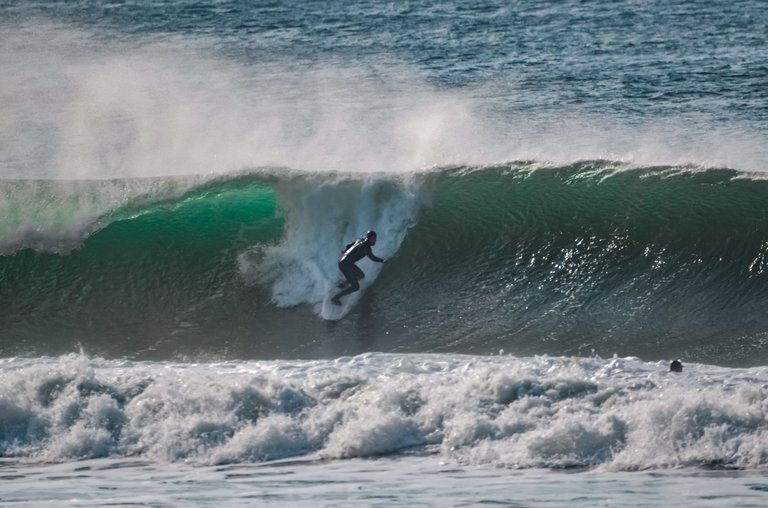
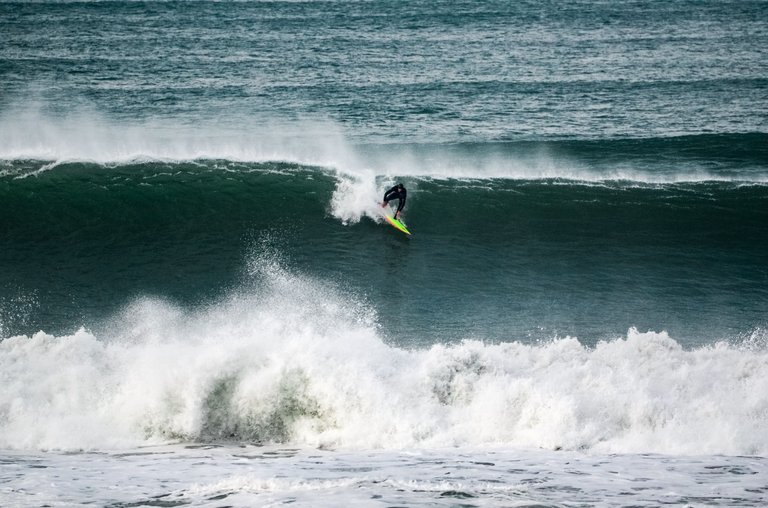
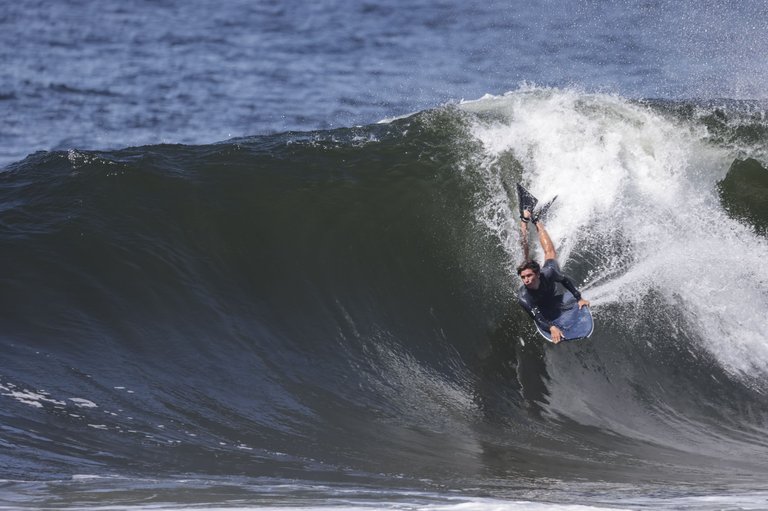
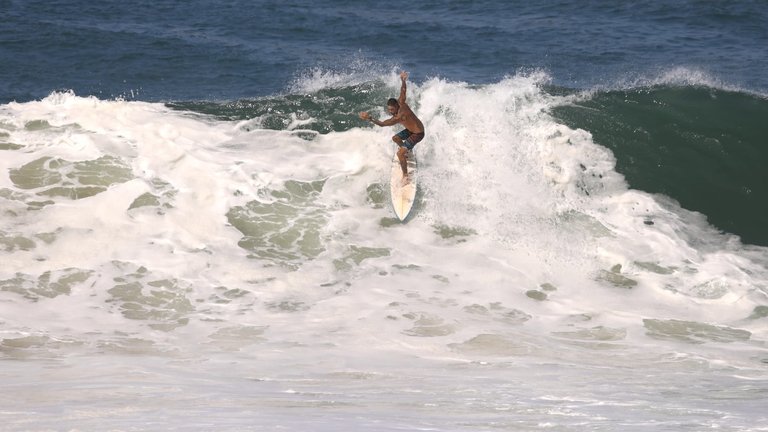

- In bottom turns - when the surfer is at the base of the wave - you can get a sense of the size of the wave in relation to the surfer. For those who enjoy big waves or like to venture into bigger seas, this could be the type of photo that will please the surfer:
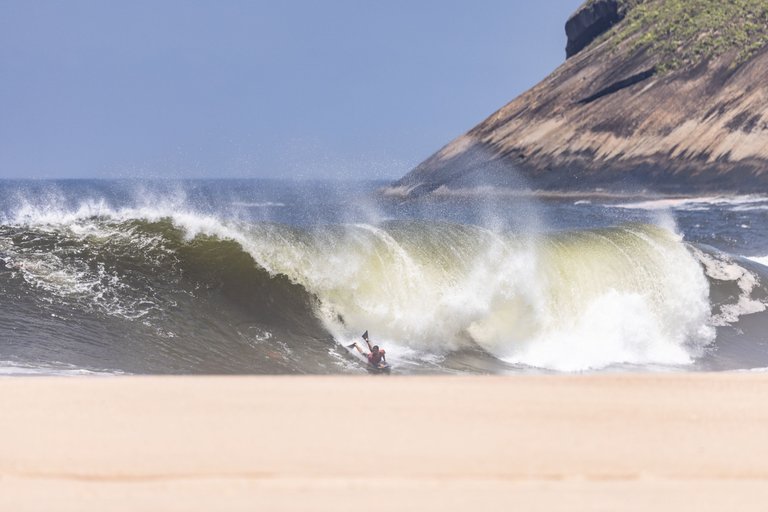
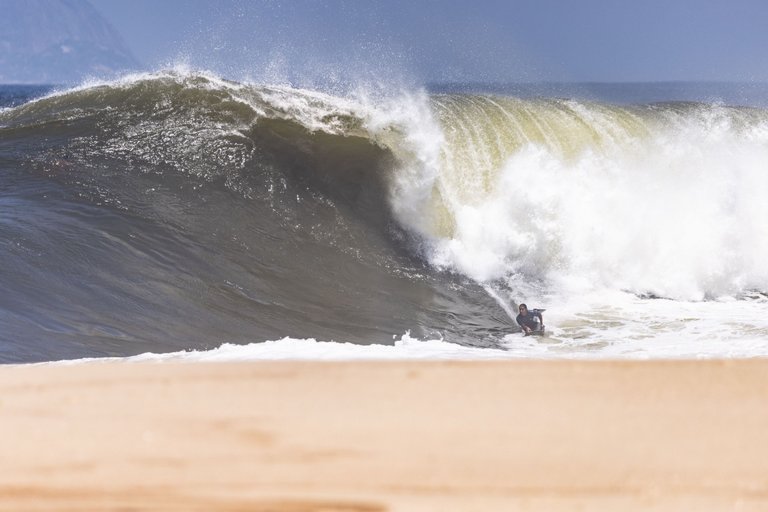
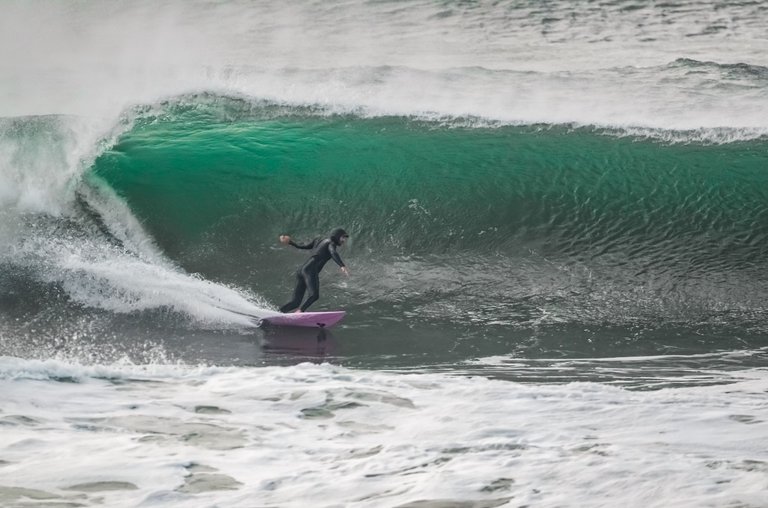
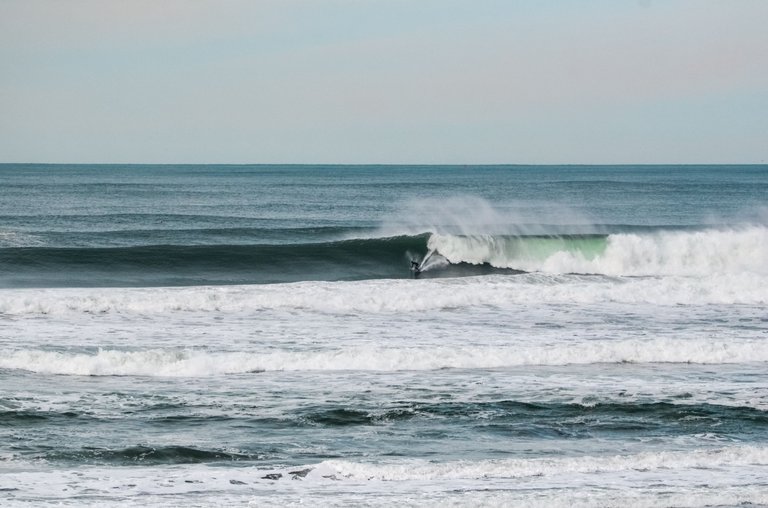
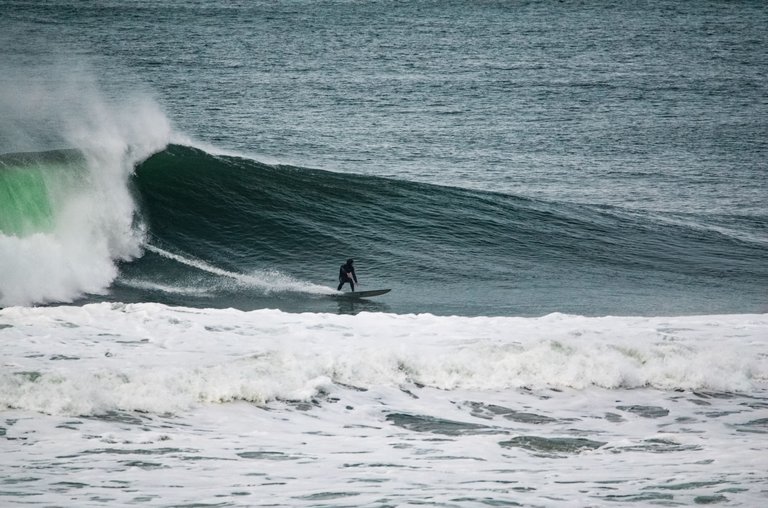
- Maneuvers, be cutbacks, laybacks, snaps, it doesn't matter; you can "measure" the aggressiveness of the maneuvers by the amount of water they throw out of the wave. Also, he more vertical or more the board comes out of the water (for example, fins sticking out of the lip of the wave), the more valued the photo will be. In general, the bigger the "splash", the better:

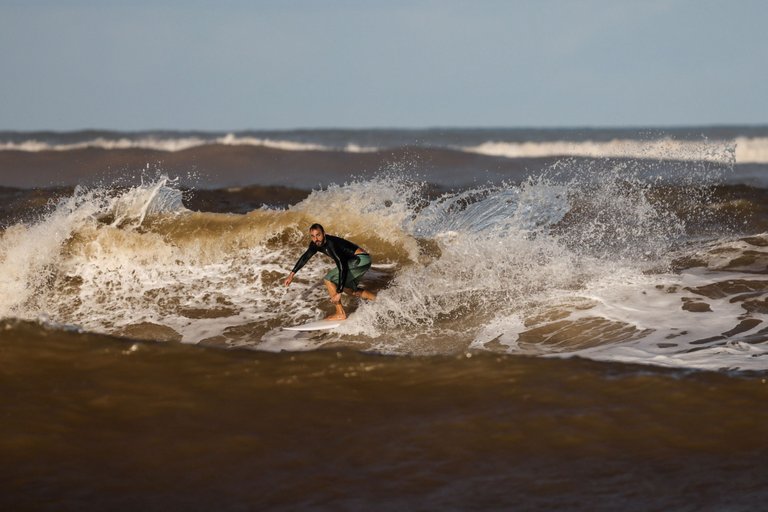
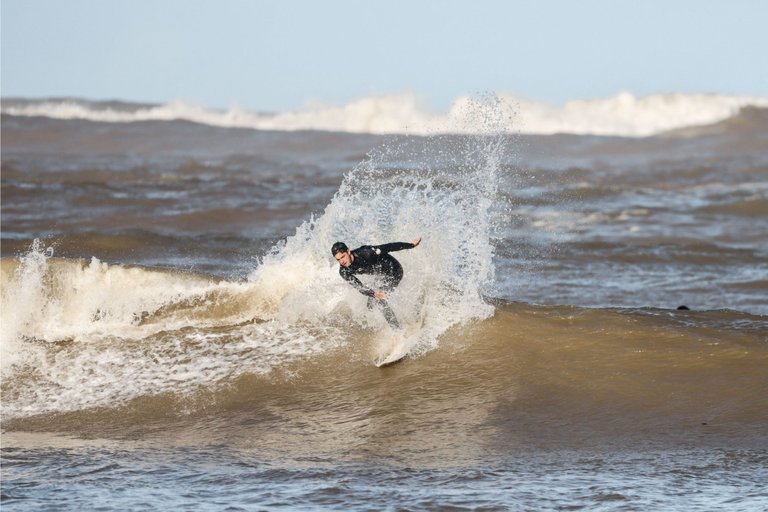
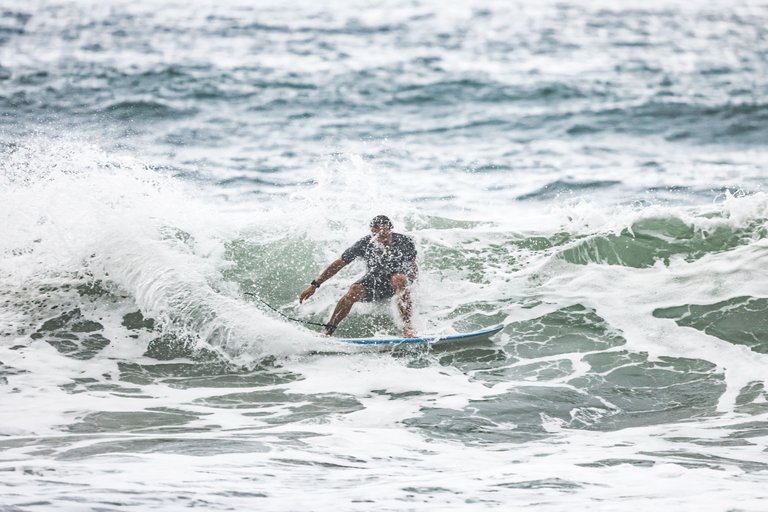
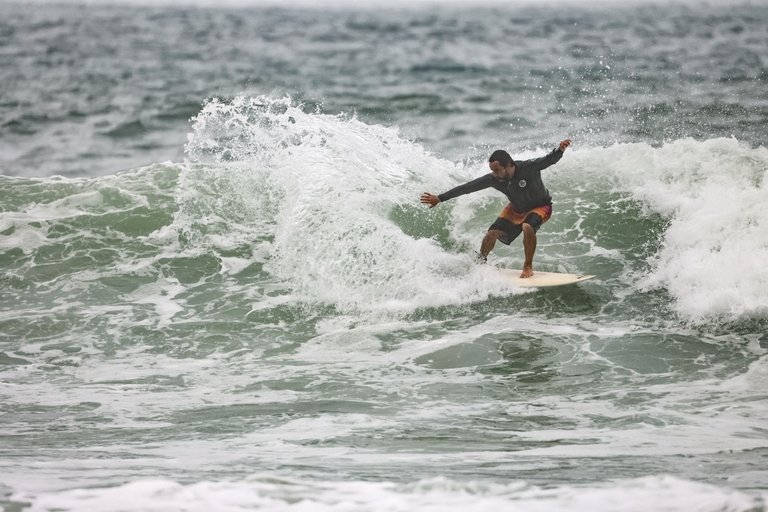
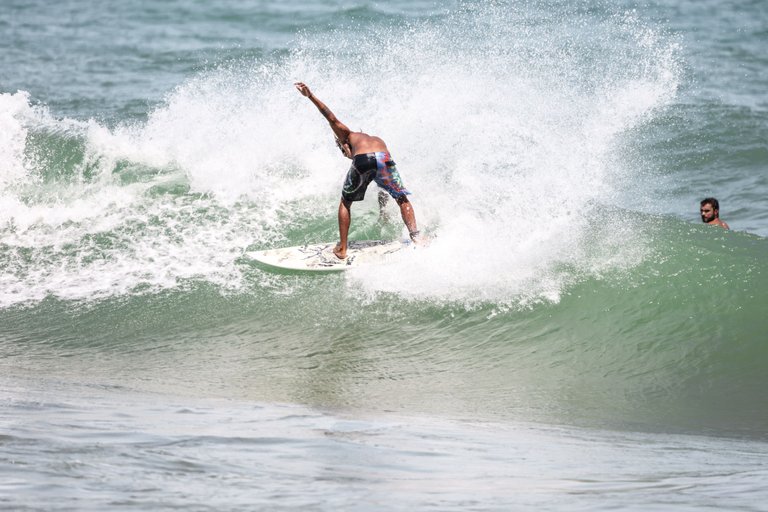
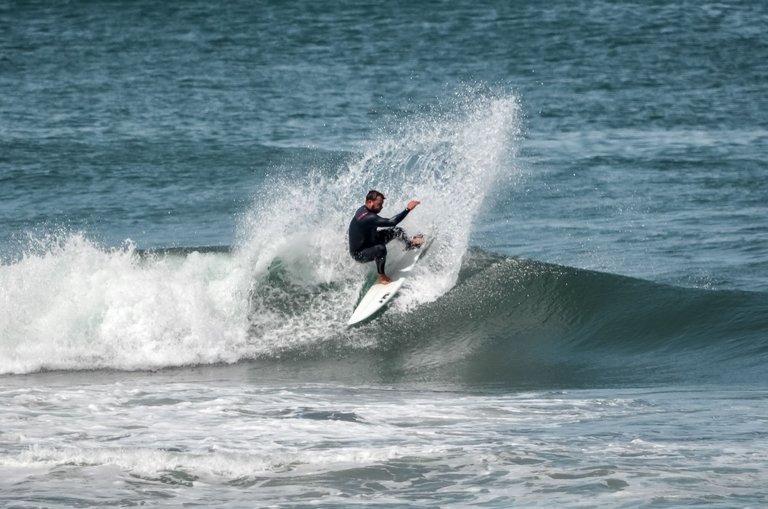
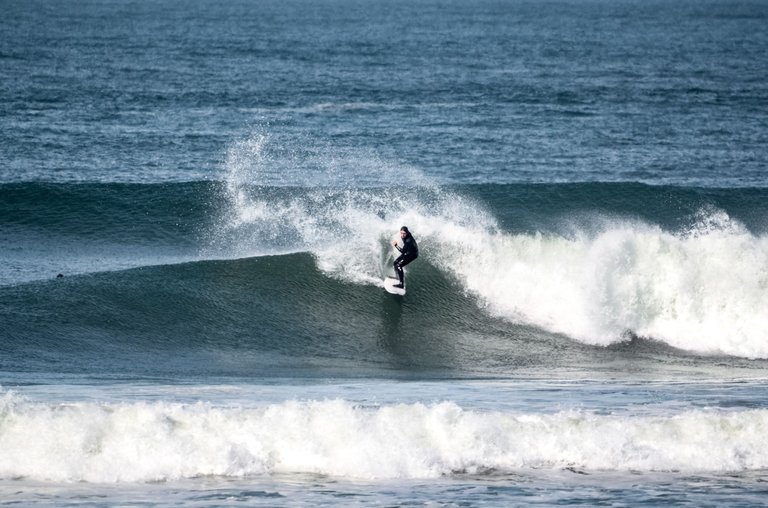
- Among the maneuvers, there are also aerial ones, and of course, the higher the surfer "flies", the more impressive the click becomes:

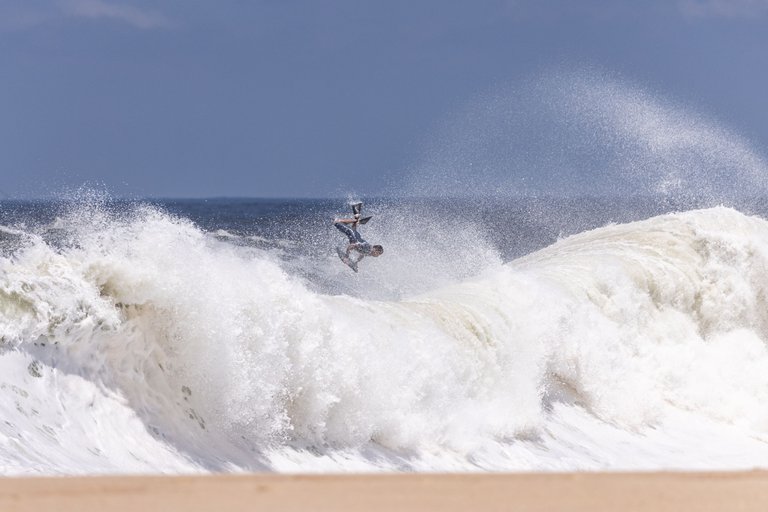

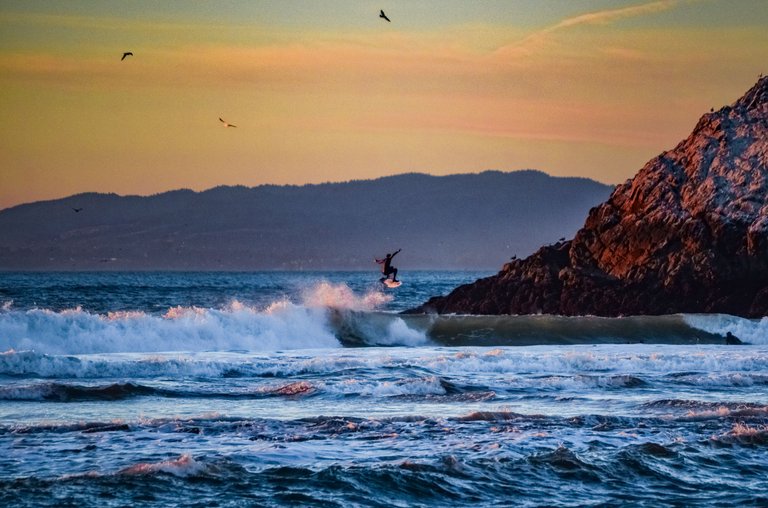
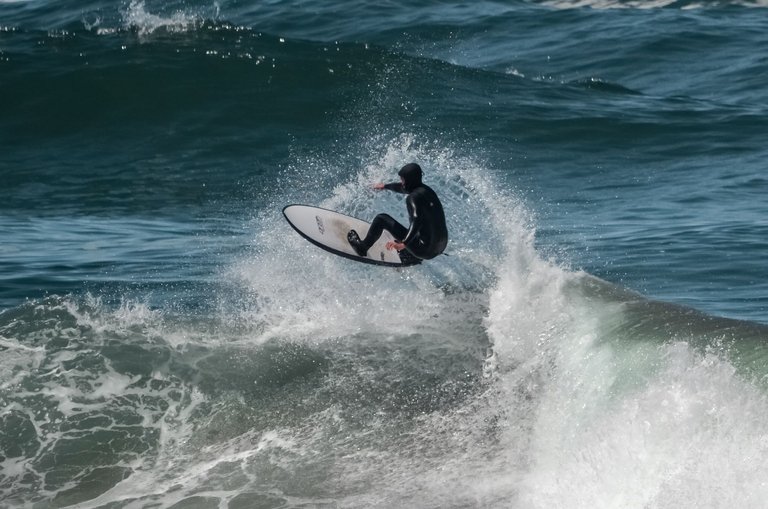
- And in the case of barrels, I already discussed it in this post. There are two ways, and it will depend a lot on the taste of each surfer. If you are facing the surf spot, a sequence in which you can see the surfer entering, getting barreled, and then coming out could be the dream sequence of his life:

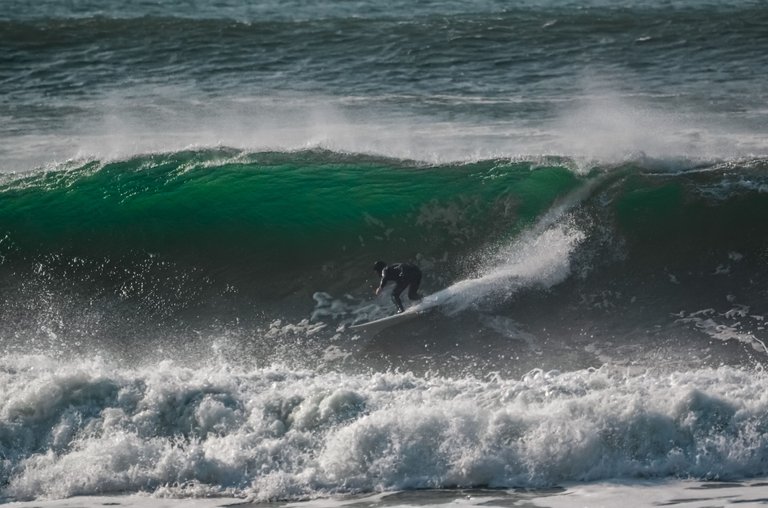

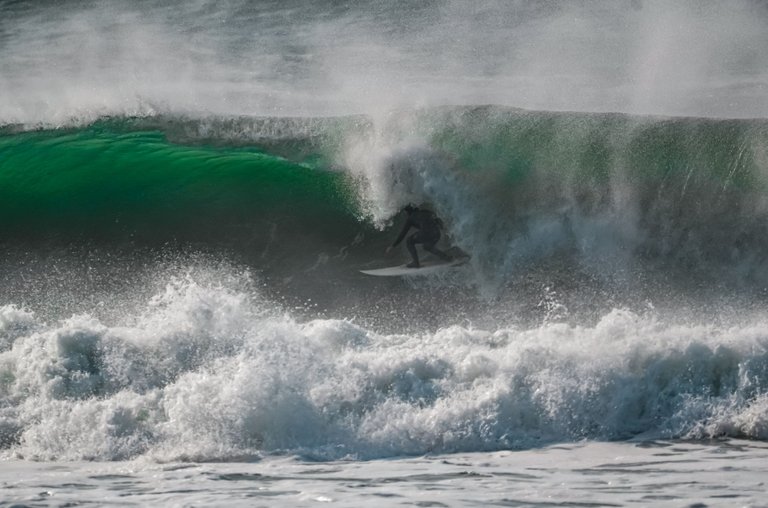

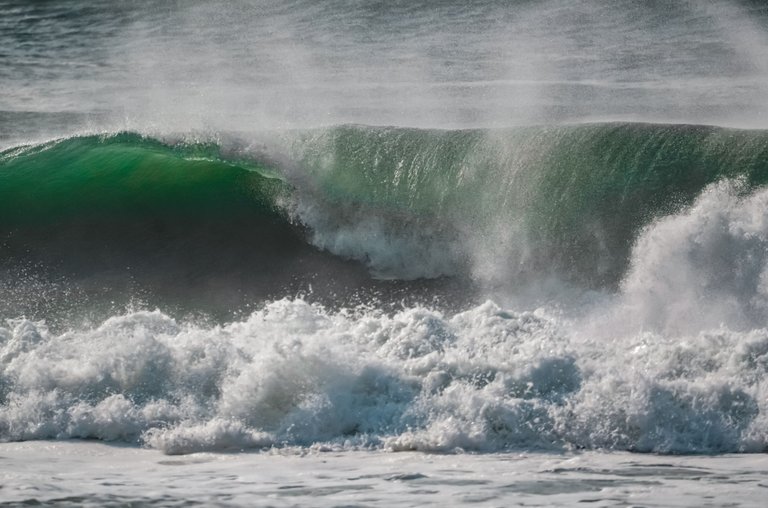
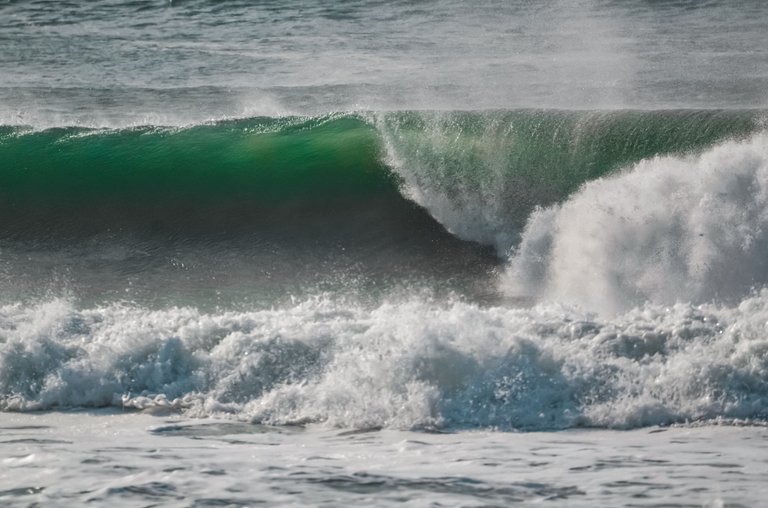
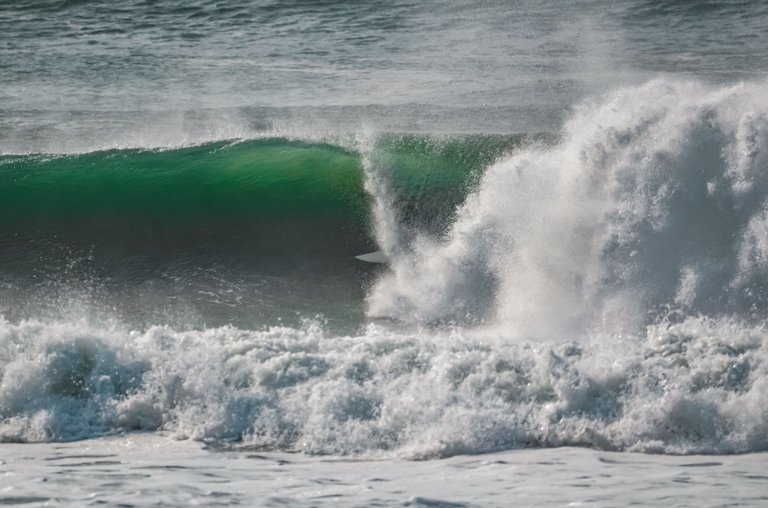
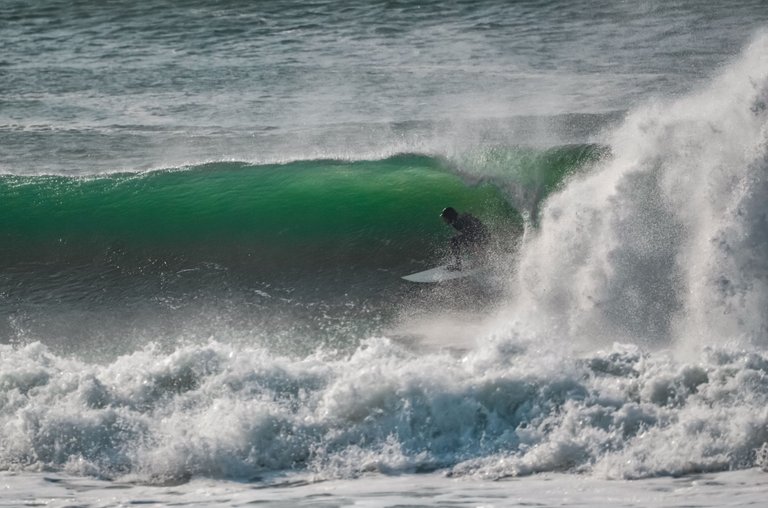

- Another option in the case of barrels is to position yourself in a place where you can see the surfer inside the tube, like this:
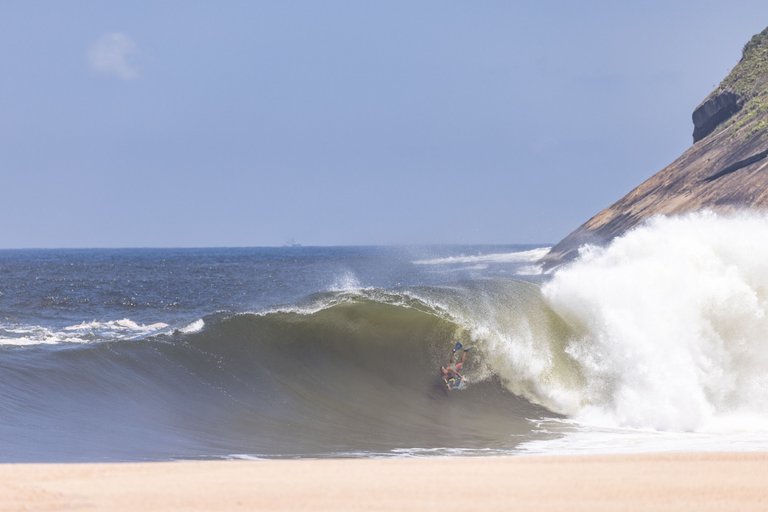
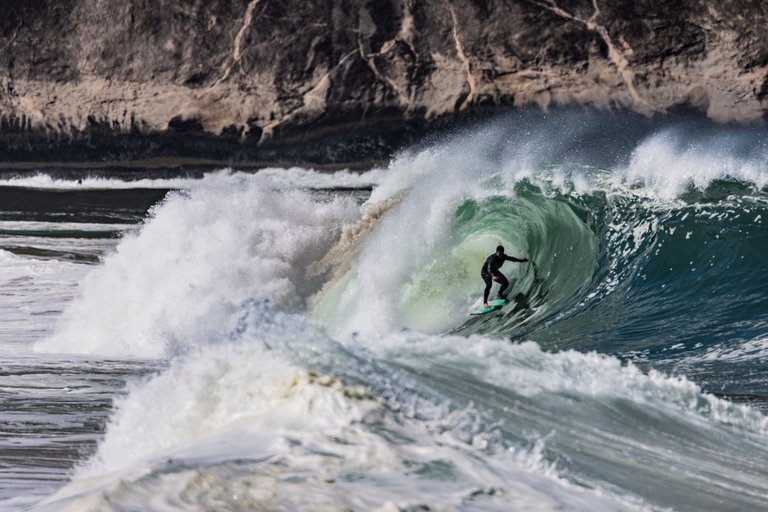
- And, of course, if you're photographing people just starting to surf, almost any photo will make the person happy. But standing on the board is maybe the main achievement for anyone beginning to surf. So, even if the person is catching a foam wave on a soft board, be sure to record this moment:
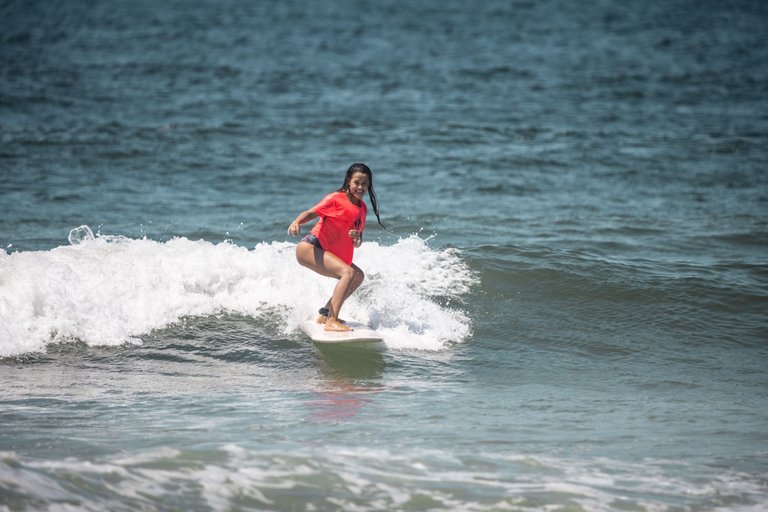
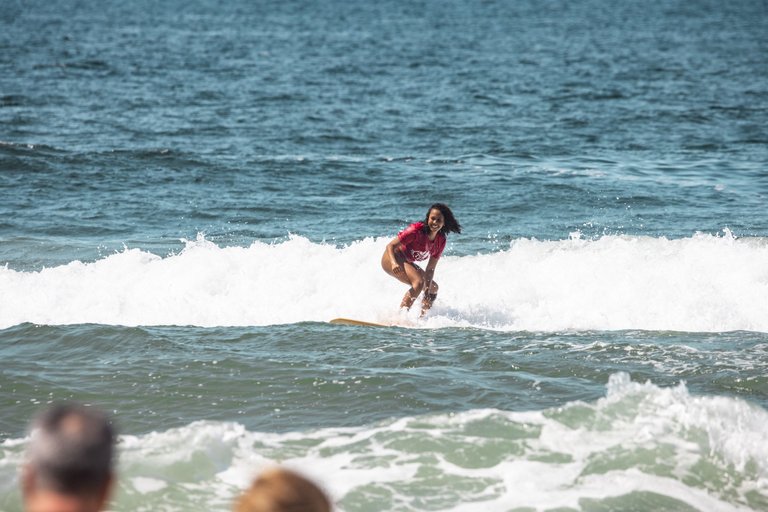
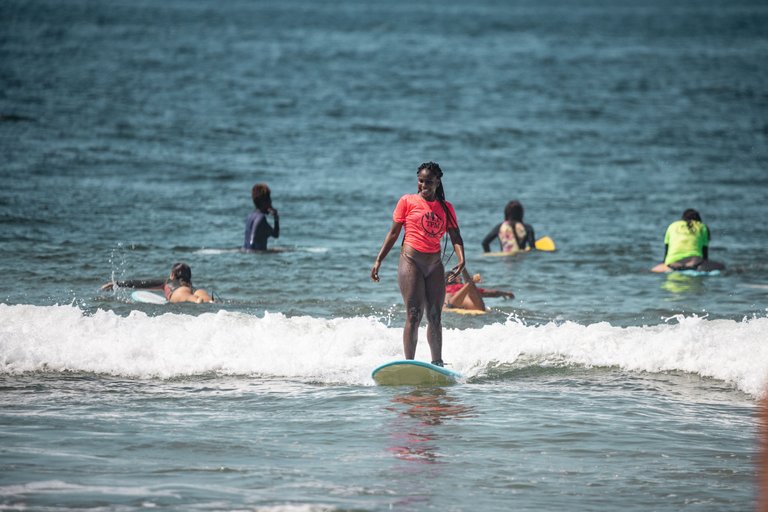
2. Learn about wave forecasting and reading the sea
Understanding the wave forecast and how they behave and break when they arrive at the beach where you will photograph is as important as learning to surf. And you will need to know about this subject when you learn to surf. Lucky for you, I already have content published here that can help you with this process. Take a look here:
- Types of waves for surfing and how they are formed
- What are the types of seabed, and how do they influence surfing?
- How I read the sea forecast for surfing on Surfguru
- How to improve sea reading for surfing
It's obvious to me, as a surfer and photographer, that these issues are fundamental, but here are some insights that, in my experience, may not be so obvious to everyone: you can plan ahead and save time.
When you learn to read the wave forecast, you will know when there will be waves and when there won't be. This way, you can plan and include surf days and photo days in your routine. I, for example, like surfing small waves, but I like photographing big waves. Imagine if, one day, I decide to go surfing, I don't look at the forecast, and I arrive at the beach and the sea is too big for me? I literally lost travel, time, and money. At most, I would enjoy the beach, lol. And I reinforce that the posts I made and shared above can help you with this!
3. Aperture and shutter speed: which settings to use
Surfing is an extreme sport, and like practically all extreme sports, everything happens very quickly and aggressively. In this case, freezing moments is probably the best option. For this, I realized that the minimum shutter speed that works well in surfing is 1/800, but the higher it is, the better. It all depends on your goal.
Luckily for us, surfing is a sport that is practiced most of the time during the day and with a lot of sun, which significantly favors the lives of surf photographers.
I really like using my camera in aperture priority or shutter priority mode when I'm photographing surf. But everything will depend on your goal and the weather that day is like.
Aperture priority: I usually like to shoot in this mode to ensure that I have as much light as possible passing through my lens. In this case, this technique works well for me on cloudy and partially cloudy days, as I prefer to ensure photos with enough light so that I don't have to do a lot of work later in editing. But if your goal is to increase the depth of field and capture more details, the tip here is to decrease your aperture (I suggest something around 8 or 10, at least), as long as your speed is at least around 1/800.
Shutter Priority: Works best on very sunny days. With plenty of lighting, you can benefit from setting your shutter to maximum, ensuring that you can freeze every moment. Furthermore, you won't need such a large aperture and will have an even greater wealth of details in your photos.
4. Composition: putting the surfer in the spotlight
For those who already know photography, composition is essential, and it's no different in surfing. These are some composition rules that I like to use in my surf photos. In general, let the obvious be said: always put the surfer in the spotlight.
- Space in front of the surfer/ where they are looking at
No surfer wants to get a closeout. A wave is good when opening to the right or left, giving you space to maneuver or "ride" the wave. Recording this in your photos is cool to show that the surfer's wave choice was good!
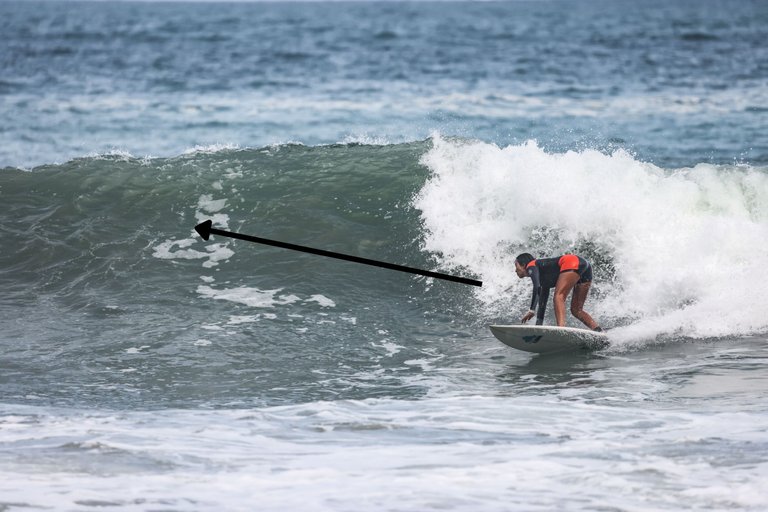
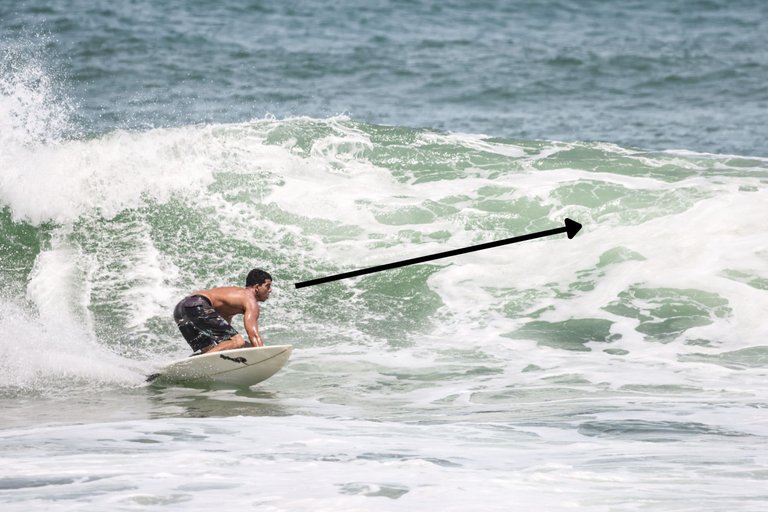
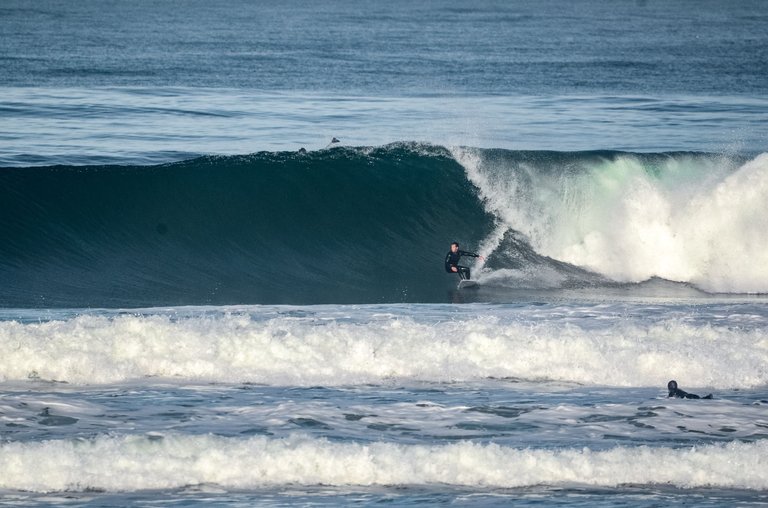
- The beloved rule of thirds
It's a bit of a cliché, but the basics always work. Combined with other elements, in addition to the surfer, in one of the other gold spots, it can give an idea of dimension and size that will enrich your photo even more.
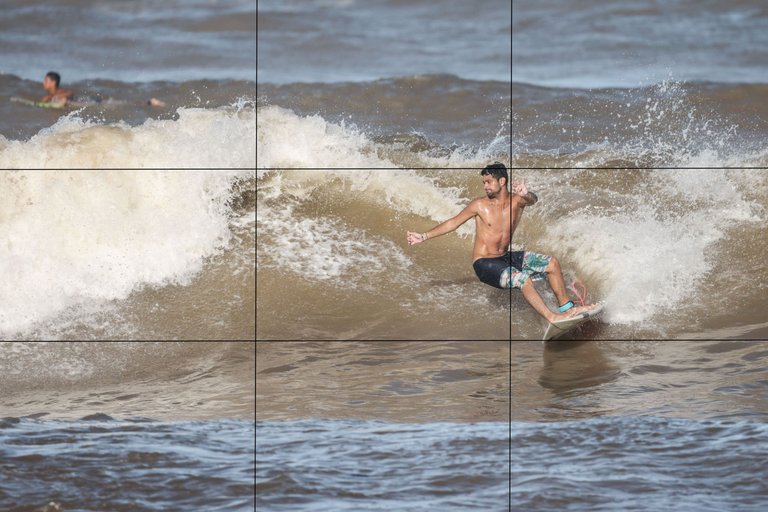

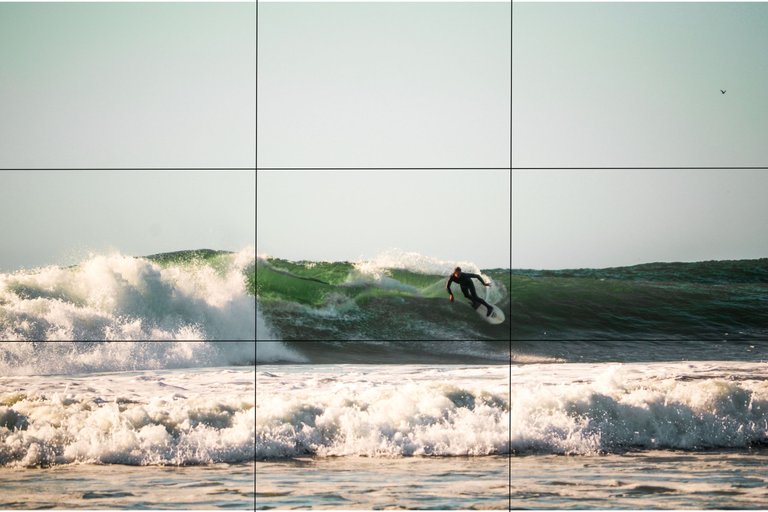
- Aligned horizon - use the lines
Another basic rule that may not be obvious to many people. You have a reference, which is the sea horizon. Use this reference! If you don't have the horizon as a reference, prioritize the surfer's posture.
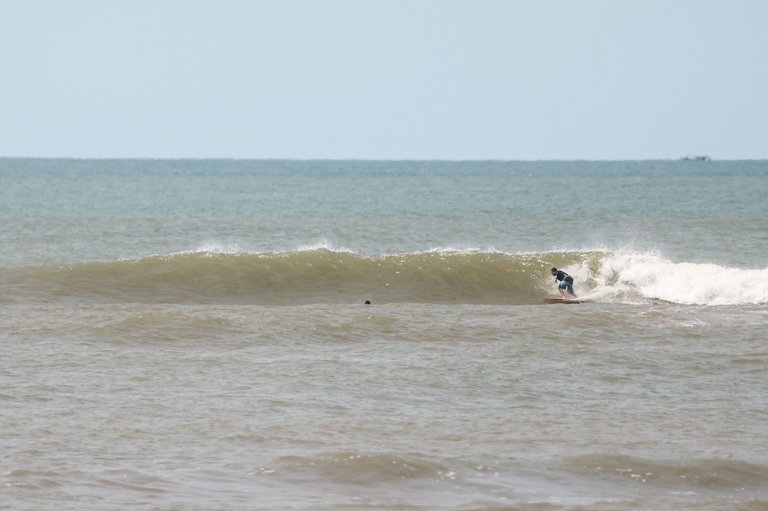
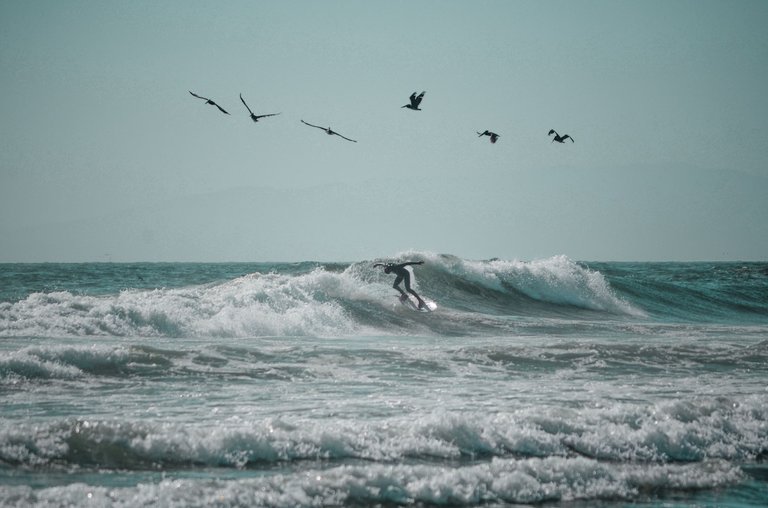
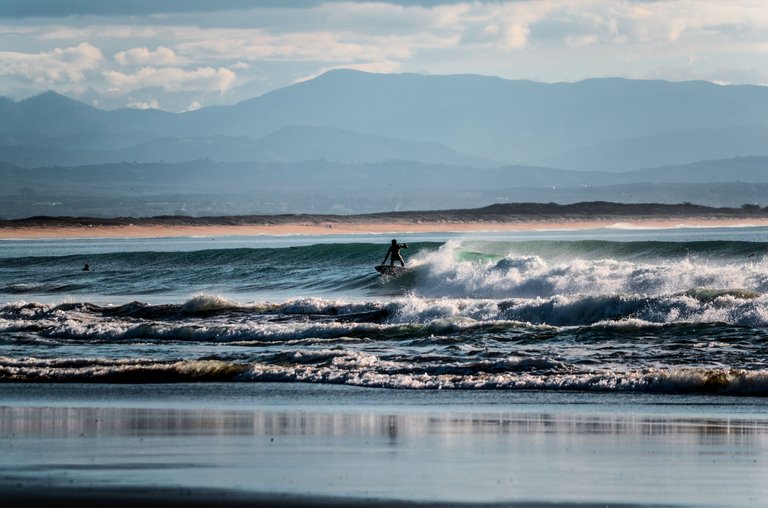
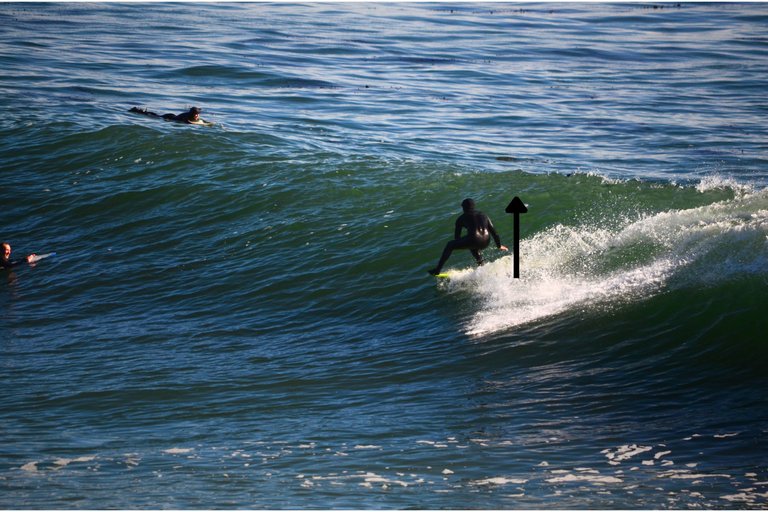
- Centering the surfer
Trust me again. Surfers want to be the center of attention, hahaha. Sometimes, the simplest way is to place the surfer in the center of your photo. Pay attention to some critical details: showing the wave as a whole tells a story, so wider angles for pictures where the surfer is centered can be more beneficial for your click. Just be careful not to include too many elements in your composition.
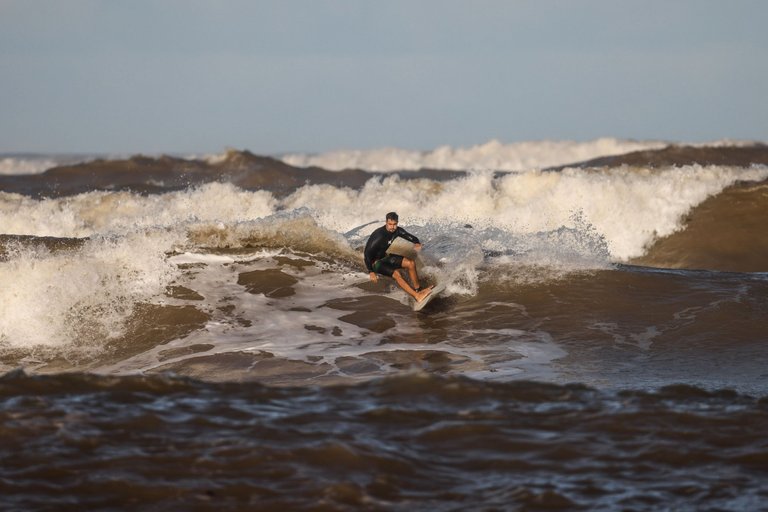

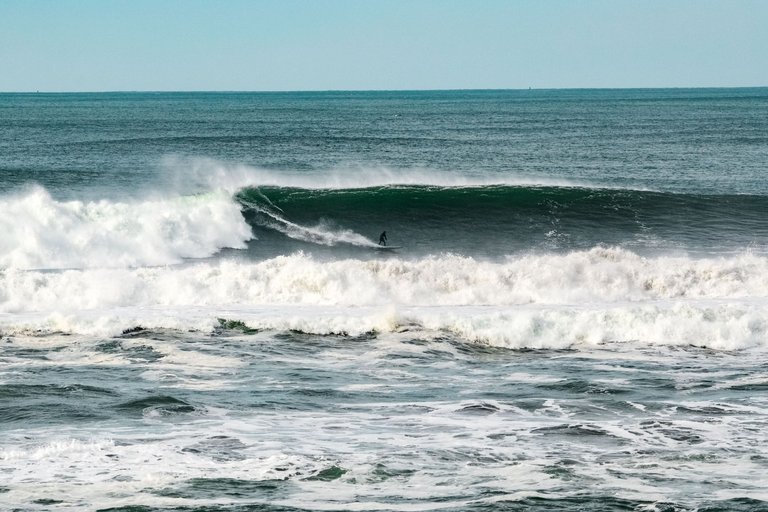
5. Protect yourself from the sun
It's kind of obvious, but it needs to be said, doesn't it? Sunscreen, cap, water, umbrella, and clothing with UV protection can be your greatest allies during a surf session. This will ensure your safety and comfort when shooting under the scorching sun.
Ahh, and a chair is everything! I've photographed sitting on the sand and standing for hours. A small chair (with a backrest, if possible) will make you more comfortable, and you can rest your back.

Extra: Have a good relationship with surfers
Another way to enter this universe more is by talking, exchanging ideas, and making friends. I attribute a large part of my evolution in surf photography to this, mainly because I'm very shy and don't always make the first move.
In this sense, I met people willing to help me who made all the difference in this process. Today, I have friends who surf and with whom I have formed a non-verbal partnership, which works as follows: I give them all the photos and videos I take of them, and in return, they help me identify the surfers I photographed. This way, I can reach more people and take my work to a larger audience.
I also exchanged photos for experiences when I didn't have a surfboard or the logistics for me to surf were complicated. A friend lent me a board to surf, and I gave him all the photos and videos I took of him in exchange. In addition, he also did my "advertising" in the water, letting surfers know that I was out there taking photos.
Delivering more than expected is also a good practice, not just in surf photography but in any field of photography. This week, a guy bought a photo from me, and I sent him five because he was unsure which photo to choose from these five. The work was already done, so why not? When you deliver more, people value your work more, making them feel special and want your photos again.
Ultimately, I want to convey the message: enjoy the process.
I've made many mistakes in the last 5 years for me to be writing this post today. And that's what made me grow. Besides, I learned much from other surfers and not necessarily from other surf photographers. Listening and asking for their feedback is also very important.
Tell me what you thought of this post! Are there other surf photographers out there📷🌊? Did I forget something? Let's exchange experiences!
I hope I helped 😉
About me
Biologist, Photographer, Content Producer, and Community Builder. Please take a look at my introduction post to get to know me better.
My social networks:
- Personal Instagram – me, my husband, my cats, sustainability, biology curiosities, and adventures: @crisciacm
- Professional Instagram – surf, nature, and people photos: @crisciacesconettophoto
- Youtube Channel - surf videos: @crisciacesconetto
- My profile at Thatsgnar.ly - crisciacesconetto
- Twitter – I don't know what to do there, but it exists: @crisciacm
Português - BR [🇧🇷]
Aloha galera!
Já compartilhei aqui no meu post de introdução e nesse outro post um pouco da minha jornada na fotografia e fotografia de surf.
Eu comecei a fotografar em 2012 e comecei a surfar mais tarde, em 2016. E só mergulhei mais de cabeça na fotografia de surf em 2018, quando fui morar na California. Nesses últimos 5 anos eu acredito ter aprendido bastante sobre fotografia de surf, o suficiente para poder passar um pouco da minha experiência pra frente.
Não me considero uma profissional de fotografia de surf, mas é um dos meus trabalhos que contribuem para a minha renda mensal. Então resolvi montar esse post pra compartilhar algumas dicas e aprendizados que fui agregando ao longo desse tempo, e algumas delas vão te ajudar a se inserir mais nesse mercado e, até vender mais fotos, se esse for o seu objetivo. Até porque praticamente todo mundo começa na fotografia como um hobby, até virar seu trabalho rs.
1. Aprenda o básico sobre surf
Pode confiar em mim. Se você quiser entrar em qualquer ramo da fotografia, eu acredito ser essencial você entender como é estar na frente das câmeras, pois quando você está só atrás das câmeras, você está vendo o seu motivo muito superficialmente.
No caso da fotografia de surf, aprender a surfar vai te fazer entender, por exemplo, sobre como surfistas se posicionam dentro da água e quais são os momentos mais importantes na hora de pegar uma onda.
Eu particularmente me senti muito confortável quando comecei a fotografar surf, porque eu já entendia sobre o esporte e porque eu queria ver registros e fotos minhas desses momentos.
Você não precisa ser atleta ou profissional no surf, mas entender o básico já vai adiantar muito o seu processo nesse ramo e você também vai economizar tempo, cliques e dinheiro.
Indo direto ao ponto, os momentos importantes no surf são o drop (a hora que o surfista levanta e fica em pé na prancha), cavadas, manobras e tubos. Segue alguns exemplos de situações e fotos que eu considero boas:
- Quando o drop é difícil ou muito vertical, principalmente no caso de ondas grandes ou cavadas/tubulares:





- Nas cavadas - quando surfista está na base da onda - dá pra ter uma noção do tamanho da onda em relação ao surfista. Para os que curtem ondas grandes ou gostam de se aventurar em mares maiores, esse pode ser o tipo de foto que vai agradar o surfista:





- Manobras, sejam elas rasgadas, cutbacks, laybacks, não importa, você consegue “medir” a agressividade das manobras pela quantidade de água que elas jogam pra fora da onda. E também, quanto mais verticais ou mais a prancha sai da água (por exemplo, quilhas pra fora do lip da onda), mais valorizada é a foto também. No geral, quanto maior o “splash”, melhor:








- Entre as manobras também tem os aéreos, e é claro, quanto mais alto o surfista “voa”, mais impressionante fica o clique:





- E no caso dos tubos, já até falei sobre isso aqui nesse post. Tem duas formas, e aí vai depender muito do gosto de cada surfista. Se você está de frente pro pico, uma sequência em que é possível ver o surfista entrando, pegando tubo e depois saindo, pode ser a sequência dos sonhos da vida dele:










- Outra opção no caso dos tubos, é se posicionar em um local onda você consiga ver o surfista dentro do tubo, assim:


- E é claro, se você está fotografando pessoas que estão começando a surfar, praticamente qualquer foto vai deixar a pessoa feliz. Mas ficar em pé na prancha deve ser a principal conquista pra quem está começando a surfar. Então nem que a pessoa esteja pegando uma espuminha numa prancha soft, não deixe de registrar esse momento:



2. Aprenda sobre previsão de ondas e a ler o mar
Entender de previsão das ondas e como elas se comportam e quebram quando chegam na praia em que você vai fotografar é tão importante quanto aprender a surfar. E você vai precisar saber sobre esse assunto quando for aprender a surfar também. A sua sorte é que eu já tenho conteúdos publicados aqui que podem te ajudar nesse processo. Dá uma olhada aqui:
- Tipos de ondas para o surf e como elas são formadas
- Quais são os tipos de fundo e como eles influenciam no surf?
- Como eu leio a previsão do mar para o surf no Surfguru
- Como melhorar a leitura do mar para o surf
Pra mim é muito óbvio, como surfista e fotógrafa que esses assuntos são extremamente importantes, mas aqui vão alguns insights que, na minha experiência, podem não ser tão óbvios pra todo mundo: você consegue se programar e economizar tempo.
Quando você aprende a ler a previsão das ondas, você vai saber quando vai ter onda e quando não vai ter. Dessa forma, você consegue se programar e incluir na sua rotina os dias de surf, e os dias de foto. Eu, por exemplo, gosto de surfar em mares pequenos, mas gosto de fotografar mares grandes. Imagina se, num dia que eu resolvo ir surfar, não olho a previsão e chego na praia e o mar ta grande pra mim? Eu literalmente perco a viagem, tempo e dinheiro. No máximo iria curtir a praia rs. E eu reforço, que os posts que fiz e compartilhei aqui em cima, podem te ajudar disso!
3. Abertura e velocidade: quais configurações usar
Surf é um esporte radical, e como praticamente todo esporte radical, tudo acontece muito rápido e com muita agressividade. Nesse caso, congelar os momentos é, na minha opinião, a melhor opção. Pra isso, percebi que no surf, a velocidade mínima de obturador que funciona bem é 1/800, mas quanto mais alta for, melhor. Tudo vai depender do seu objetivo
Pra nossa sorte, o surf é um esporte que é praticado praticamente a maior parte do tempo durante o dia e com muito sol, o que favorece e muito a vida dos fotógrafos de surf.
Eu gosto muito de usar a minha câmera no modo de prioridade de abertura ou prioridade do obturador quando estou fotografando surf. Mas tudo vai depender do seu objetivo e de como está o tempo no dia.
Prioridade de abertura: Na grande maioria das vezes eu gosto de fotografar nesse modo pra garantir que eu vou ter a maior quantidade de luz possível passando pela minha lente. Nesse caso, essa técnica funciona bem pra mim em dias nublados e parcialmente nublados, pois eu prefiro garantir fotos com luz o suficiente pra que eu não tenha muito trabalho depois na edição. Mas se o seu objetivo for aumentar a profundidade de campo e pegar mais detalhes, a dica aqui é diminuir sua abertura (sugiro algo em torno de 8 ou 10, pelo menos), desde que sua velocidade esteja no mínimo em torno de 1/800.
Prioridade do obturador: funciona melhor em dias muito ensolarados. Tendo muita iluminação, você pode se beneficiar colocando seu obturador no máximo, garantindo que você vai conseguir congelar todos os momentos. Além disso, você não vai precisar de uma abertura tão grande, e vai ter uma riqueza de detalhes ainda maior nas suas fotos.
4. Composição: colocando o surfista em evidência
Pra quem já manja de fotografia, composição é uma parte essencial dela e não é diferente no surf. Essas são algumas regras de composição que gosto de usar nas minhas fotos de surf. No geral, que o óbvio seja dito: coloque sempre o surfista em evidência.
- Espaço na frente do surfista / pra onde ele está olhando
Nenhum surfista quer pegar uma fechadeira. Uma onda é boa quando ela está abrindo pra direita ou pra esquerda, dando espaço pra manobrar ou “passear” pela onda. Registrar isso nas suas fotos é legal, pra mostrar que a escolha da onda pelo surfista foi boa!



- A queridinha regra dos terços
Meio clichê, mas o básico sempre funciona. Se combinada com outros elementos, além do surfista, em um dos outros pontos de ouro, pode dar uma ideia de dimensão e tamanho que vão enriquecer mais a sua foto.



- Horizonte alinhado
Outra regra básica, mas que pode não ser óbvia pra muitas pessoas. Você tem uma referência, que é o horizonte do mar. Use essa referência! Se você não tem o horizonte como referência, priorize a postura do surfista.




- Centralizando o surfista
Confie em mim, novamente. Surfistas querem ser o centro das atenções, hahaha. As vezes a forma mais simples é colocar o surfista no centro da sua foto. Apenas atente-se para alguns detalhes importantes: mostrar a onda como um todo conta uma história, por isso ângulos mais abertos para fotos em que o surfista está centralizado podem favorecer mais o seu clique. Apenas tome cuidado pra não colocar elementos demais na sua composição.



5. Proteja-se do sol
Meio óbvio, mas precisa ser dito, não é? Protetor solar, boné, água, guarda-sol e, roupas com proteção UV podem ser os seus maiores aliados numa sessão de surf. Isso garantirá sua segurança e conforto ao fotografar sob o sol escaldante.
Ahh, e uma cadeirinha é tudo! Eu já fotografei sentada na areia e em pé durante horas. Ter uma cadeirinha (se possível, com encosto), vai te deixar mais confortável e você vai conseguir descansar sua coluna.

Extra: Tenha uma boa relação com os surfistas
Uma outra forma de entrar mais nesse universo é conversando, trocando ideias e fazendo amizades. Eu atribuo grande parte da minha evolução na fotografia de surf devido a isso, principalmente porque sou muito tímida e nem sempre dou o primeiro passo.
Nesse sentido, eu conheci pessoas que estavam dispostas a me ajudar, e que fizeram toda a diferença nesse processo. Hoje eu tenho amigos que surfam e com os quais eu fiz uma parceria não verbal, que funciona da seguinte forma: eu dou todas as fotos e videos que faço daquela pessoa e em troca ela me ajuda a identificar os surfistas que fotografei. Dessa forma eu consigo alcançar mais pessoas e levar o meu trabalho para um público maior.
Também já troquei fotos por experiências, quando, numa época em que eu não tinha prancha ou a logística para eu surfar era complicada, um amigo me emprestava uma prancha pra surfar e, em troca, eu dava todas as fotos e vídeos que eu fazia dele. E, além disso, ele também fazia a minha “propaganda” dentro da água, avisando para os surfistas que eu tava lá fora fotografando.
Entregar mais do que o esperado também é uma boa prática, não só na fotografia de surf né, em qualquer ramo da fotografia. Essa semana um rapaz comprou uma foto minha e eu mandei cinco pra ele porque ele tinha ficado em dúvida em qual foto escolher entre essas cinco. O trabalho já estava feito, então porque não? Quando você entrega mais, as pessoas valorizam mais o seu trabalho e faz elas se sentirem especiais e quererem suas fotos novamente.
No fim, a mensagem que eu quero passar é: aproveite o processo.
Eu errei muito nesses últimos 5 anos pra eu estar escrevendo esse post hoje. E é isso que me fez crescer. Além disso tudo, eu aprendi muito com outros surfistas e não necessariamente com outros fotógrafos de surf. Ouvir e pedir o feedback deles também é muito importante.
Me diz o que achou desse post! Tem outros fotógrafos de surf por aí 📷🌊? Acham que eu esqueci de alguma coisa? Bora trocar experiências!
Espero ter colaborado 😉
Sobre mim
Bióloga, Fotógrafa, Produtora de Conteúdo e Construtora de Comunidades. Dá uma olhada no meu post de introdução pra me conhecer melhor.
Minhas redes sociais:
- Instagram pessoal – eu, meu marido, meus gatos, sustentabilidade, curiosidades biológicas e aventuras: @crisciacm
- Instagram profissional – fotos de surf, natureza, e pessoas: @crisciacesconettophoto
- Canal no Youtube - videos de surf: @crisciacesconetto
- Meu perfil no Thatsgnar.ly - crisciacesconetto
- Twitter – Não sei o que fazer por lá, mas existe: @crisciacm
fucking awesome photos!
thank yooooou!! are you a member of Gnars?
ah vc é Brasileira, surfista e community builder! Foda! Precisamos conectar! Conhece o Hadad da Gnars? Ele criou a SurfHive aqui na HiveBlockchain tbm. Eu e meus amigos comandamos a SkateHive. Vc já está por aqui tem 1 ano, uau, ainda não tinha visto. Prazer!
hehehehe yeeees, Luiz é brother! Trabalho com ele no Surfguru já a três anos, e entrei na criação da Surfhive junto com ele, sou uma das moderadoras lá! Legal demais encontrar alguém aqui assim, organicamente hehe! Tô lá no discord da Gnars olhando tudo sempre!! bora conectar sim!
Opa que massa Criscia, legal demais mesmo! Tenho certeza que logo mais vamos nos encontrar em algum projeto. E vc, já tem um Gnars?
boaaa!! vamos sim! tenho dois GNARs :)
e tenho uma proposta (no forno) em conjunto com uma surfista daqui do RJ, pra pedir financiamento na Gnars 😜
top demais!! quando subir a proposta manda pra eu votar 😎
yesssssss!!! I am!!!
Wow! These are impressive shots that you really achieve. Surfing has always caught my attention, but I have a lot of respect for those beautifully huge waves. If I ever had the opportunity to both learn to surf and photograph it, I wouldn't hesitate for a second. Thanks for the tips 🤙
Aww, thank you so so much! I admire big waves so much, I love taking those photos... it's such a great force in nature and we're so small next to it that I find this contrast fascinating. If you have the opportunity, just go for it! I'm glad you liked the post and if you ever have any questions just let me know and I'll be happy to help :)
Excellent shots! Surfing always has the action when it comes to photography!
Thank you!! I love it!
Excelentes fotografías.
Gracias!
Congratulations @crisciacm! You have completed the following achievement on the Hive blockchain And have been rewarded with New badge(s)
Your next target is to reach 4500 upvotes.
You can view your badges on your board and compare yourself to others in the Ranking
If you no longer want to receive notifications, reply to this comment with the word
STOPCheck out our last posts:
Your post was manually curated by @michupa.
Delegate your HP to the hive-br.voter account and earn Hive daily!
🔹 Follow our Curation Trail and don't miss voting! 🔹
The shots are quite good and the waves are also quite big
Thanks!! I really like to take shots of big waves :)
Obrigado por promover a comunidade Hive-BR em suas postagens.
Vamos seguir fortalecendo a Hive